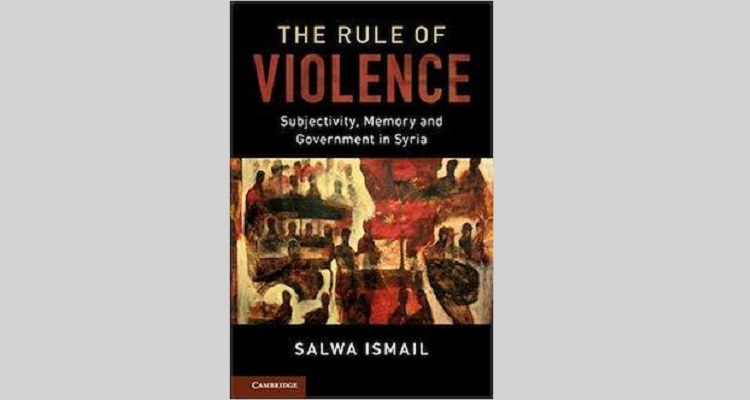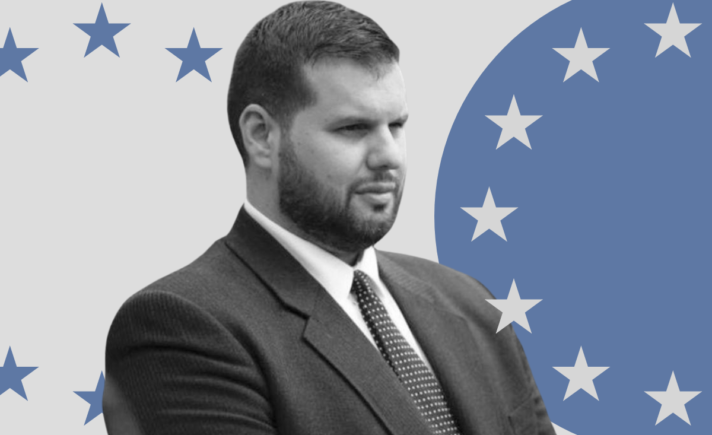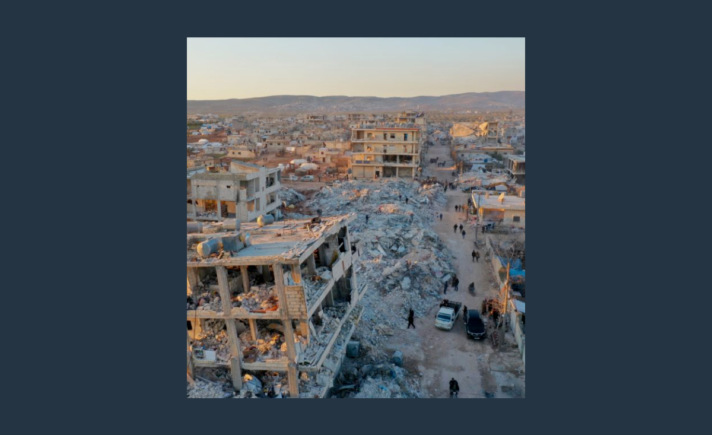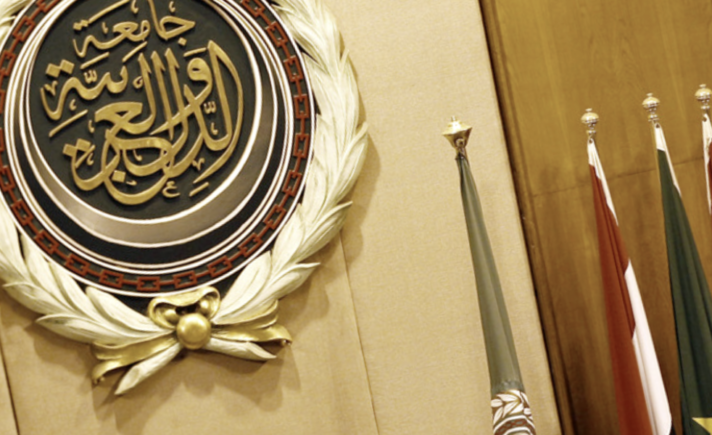On 7 April, 2018, between 40 and 50 people were killed in a chemical attack on the Syrian city of Douma, northeast of Damascus. Following this attack, a common line of argument from supporters and allies of the Syrian regime proposed that it would not have been rational for Assad to use chemical weapons, given the regime’s military dominance and the likelihood of its impending victory in the city. Since a chemical attack might prompt a Western response, it could only worsen the regime’s position on the ground. Only armed opposition groups would stand to benefit from the attack, indicating that responsibility must lie with them—or so the logic goes, despite extensive and meticulous investigations demonstrating regime responsibility for the attack.
Even if one accepts rationality alone as a sufficient framework through which to approach political violence, such arguments, raised in different guises after each chemical attack in Syria, rest on questionable premises and are fraught with internal contradictions. Supposing opposition groups did possess chemical weapons (a notion for which no evidence exists), would it be rational to deploy them in staged “false flag” attacks against civilians in areas they control—that is, against people whose support they need—and never against battlefield enemies? Does the regime not invariably achieve rational military objectives through these attacks; in the case of Douma, by forcing the local armed opposition to accept a faster surrender?
On the other hand, should we not ask questions about the very concept of “rationality” itself in this context? How should we define “rationality?” Do states typically commit acts of extreme violence for rational reasons? Does the premise of rationality sufficiently account for issues of legitimacy, hegemony, dominance, and consent that together play a central role in the exercise of power?
Salwa Ismail’s The Rule of Violence—a 2018 book that presents a thorough examination of Syrian state violence since the beginning of the Assad family’s reign in 1970—situates the regime’s vicious rule as a purposeful means of governance rather than an irrational approach to statecraft, yet constructively departs from a policy-centric focus on the strategic imperatives of violence. Instead, Ismail, a professor in the Department of Politics and International Studies at SOAS University of London, argues convincingly that state violence shapes the relationship between regime and populace and works to produce citizens’ political subjectivities and identities. She encourages readers to consider the affective and symbolic dimensions of violence, all while avoiding the pitfalls that can at times characterize esoteric strains of affect theory
Rather than considering extreme violence in isolation, Ismail’s text draws connections between violence in multiple spheres of life in Syria, from the massacre and the prison to everyday interactions on the street. For instance, during the Syrian uprising in 2011, Ismail notes a documented pattern of regime forces targeting demonstrators in the eyes. The symbolic dominance exerted through such acts mirrors techniques used for decades against political prisoners, who faced physical punishments for looking at the guards in the eye, according to various accounts of incarceration. A similar dynamic has long characterized interactions between security officers and Syrian citizens in public spaces—the latter are expected to demonstrate deference by keeping their gaze low.
Given the parallels which Ismail identifies between violence across a variety of milieus, it is unsurprising that she draws on Michel Foucault, who famously compared the social functions played by prisons, schools, hospitals, and factories, among other institutions. Yet Ismail ultimately departs from Foucault’s sharp distinction between older forms of “disciplinary power” based on overt violence, and subtler modern modes of social control or “biopower.” The latter have not replaced the former in Syria under Assad family rule, as Foucault might posit; rather, Ismail contends that the two operate in tandem.
Violence in prison
Consider, for instance, Syrian state violence against political prisoners, a subject which Ismail approaches via her analysis of memoirs and fictional works by former detainees alongside human rights reports. Readers learn of various practices intended to provoke abjection and disgust through the dehumanization of the subject and the transgression of bodily boundaries—prisoners are forced to swallow the spit of guards, to spit on old men, to eat dead mice and vermin, and drink urine. As described in an account of Tadmor prison, all new detainees are subject to an initiation known as “the reception party;” a ritualized form of torture intended to begin the process of eradicating the prisoner’s sense of personhood. (Similarly, Amnesty International reports speak of a “welcome party” held upon arrival at Saydnaya prison, where the organization estimates dozens of inmates have been systematically exterminated every week since late 2011.) The penetration of bodily frontiers is also enacted literally in the case of sexualized torture, as when detainees are made to sit on a bottle such that its mouth enters the anus. Notably, the physical punishment and humiliation to which Syrian prisoners are subjected is not intended merely to cause pain, but rather to strip the subject of their dignity, negate their sense of self, and cause them to alter their convictions and behavior—in Foucault’s terms, its function is governmental.
Ismail notes that the regime maintained hierarchies among political prisoners arrested and detained in the sweeping crackdown on political opposition in the late 1970s and 1980s, differentiating between subjects whom the regime viewed as re-assimilable (mostly communist and other leftist figures) and those it categorized as permanently diseased (primarily Muslim Brotherhood members). As such, the prison served as a key locale for addressing what Ismail identifies as a paradox in Assad regime rule: on the one hand, the regime seeks to foster a homogenous polity of loyal subjects, while on the other, it divides society into a patriotic “us” and an enemy “them.” In the context of these conflicting imperatives, the regime sought to coerce some prisoners to sign documents renouncing their past political beliefs, while attempting to expel others from the body politic altogether through mass executions or total neglect. As Ismail notes, the medical language used to stigmatize this latter category of prisoners has also been deployed by the younger Assad to justify the violent repression of the 2011 uprising, which he likened to a surgical procedure in a 2012 speech to the Syrian parliament. Further work should consider how the regime’s differentiated categorization of Islamist and leftist dissidents—which is explored productively through Ismail’s engagement with primary texts from both political currents—has changed or evolved to the present moment, given frequent claims surrounding Assad’s release of Islamist prisoners to alter the course of the uprising in a violent and sectarian direction.
Violence in everyday life
In the context of neoliberal state policies and drought in the 2000s, many commentators have focused on migration from rural to urban areas of Syria and subsequent class struggle as factors animating the 2011 uprising. By considering a longer history of economic deprivation and rural-to-urban migration under Assad rule, Ismail’s work offers much-needed context for more recent developments. From the 1970s onward, some rural migrants were directly integrated into coercive state institutions in the cities (often through resettlement into military quarters), whereas others were excluded from the patronage networks required to secure public sector employment. This process, often conducted on a sectarian basis, produced loyalties and resentments whose reverberations continue to the present day, helping to explain why certain suburbs of Syrian cities enthusiastically joined the uprising while others remained largely loyalist.
A particular strength of the book lies in the connections drawn by Ismail between this analysis of political economy and the “shadow state” which injects violence into ordinary social interactions. Due to shortages of food and necessities in the 1980s and early 1990s, smuggling boomed as a means of acquiring otherwise unavailable necessities. Average Syrians were drawn into illegal practices, but faced divergent responses from authorities depending on access to patronage or lack thereof. Thus, Ismail describes a paranoid society in which citizens oriented themselves and others in relation to known social categories indicating differentiated ties to the police state. In one darkly memorable anecdote mentioned in the book, when a man slapped a stranger on a public bus, passengers had little choice but to ignore the incident based on a shared understanding that the former individual was zalamat al-amn (a security agent). Much as detainees were forced to contend with the torture and execution of others around them, many Syrians bore witness to such everyday violence and felt powerless to prevent it, often producing memories of personal impotency and humiliation which led to political withdrawal.
The regime’s hegemony has also often operated through subtler means, by subcontracting governmental functions to the familial sphere. One Syrian playwright interviewed in the book described the family as a microcosm of the regime, and as Ismail notes, the figure of the father frequently stands in for Hafez al-Assad in autobiographical and fictional works by Syrian authors. In addition, the memoirs of communist prisoners point to a common state practice of enlisting family members with the aim of convincing dissidents to renounce their beliefs. Yet families were protective as well as repressive, with parents seeking to shield their children from state violence. This constraining role became increasingly unviable during the 2011 uprising, which exposed and deepened divisions within families. In an April 2011 interview conducted by Ismail in Damascus shortly after the uprising broke out, one of her pro-Baathist interlocutors described his young nephew’s imprisonment as a necessary “ear pinch.” This macabre turn of phrase renders state violence familial; a means of bringing a wayward youth back in line.
In addition to the family, the Syrian education system served as a central milieu for the reproduction of social hierarchies. In Ismail’s rich ethnographic interviews, Syrians recount memories of school as a deeply militarized space of khaki uniforms, nationalistic futuwwa (physical training) classes, and surveillance among classmates. By recounting their childhood experiences navigating an authoritarian educational system, which demanded that they join Baathist youth organizations and rewarded active membership, Ismail’s interviewees revisited their personal trajectories in relation to the broader postcolonial project of the Syrian state, tackling questions of complicity and compromise as well as resistance. One interlocutor recounts his discomfort as a schoolboy in being made to pin a photo of Hafez al-Assad on his uniform and participate in a pro-regime march while his dissident father languished in prison. Such narratives, recounted with detail and care, are a testament to the depth of Ismail’s fieldwork.
From the 1982 Hama Massacre to the 2011 uprising
Many readers will likely approach this work out of interest in the 1982 Hama Massacre—one of the most shocking individual instances of state violence in Syrian history, in which tens of thousands of civilians were killed—and its relevance to the brutal suppression of the 2011 Syrian revolution. The book does not disappoint in its consideration of this key historical event and its continuing reverberations. Ismail describes this massacre as pedagogical—a message to Syrians about the consequences of dissent, a lesson (al-dars al-hamawi) about the rules of interaction between citizenry and state. Should the populace deviate from the scripts established by this act of violence, the regime might “do Hama again,” as one of Ismail’s interviewees fearfully suggested. Notably, Hama is not commemorated by the state in its own narrativization of events as a defeat of the Muslim Brotherhood or a victory against foreign plotting—it is simply not mentioned in school textbooks, for instance. This enforced forgetting was further enacted through urban planning: where the ruins of razed homes previously stood, modern edifices were built, including leisure establishments such as hotels and restaurants. Consideration of this physical and architectural erasure may help historicize the authoritarian reconstruction process which the Assad regime seeks to implement today.
Unspoken and repressed memories of the Hama Massacre were returned to public consciousness during the 2011 uprising; an outpouring of personal narratives broke with longstanding taboos surrounding the massacre which held weight even among dissidents.As Ismail notes, some were formal testimonials which mirrored human rights reports and sought to establish empirical evidence about the massacre’s unfolding, while other more exploratory works dealt with questions of memorialization, political responsibility, personal positionality, and national identity. In the writings of the Hamawi writer Manhal al-Sarraj, Ismail finds a richly detailed social memory in which extreme violence comes to pervade the mundane—for instance, the only type of bread available during the extended curfew that accompanied the massacre became known thereafter as “the bread of the events” among Hama’s residents. Key for Ismail is the way in which collective memories of Hama, whether silenced or voiced, inform the political subjectivities of Syrian citizens as they come to terms with the violence which occurred and its present implications.
As the regime sought to suppress the 2011 uprising, the popular perception that “Hama had been nationalised” gained currency, with the city coming to stand in for the regime’s willingness to deploy extreme violence to maintain its power. Ismail insightfully notes that the initial act of state violence which spurred nationwide protests involved the violation of bodily integrity—in March 2011, security forces detained a group of schoolchildren in Daraa and infamously pulled out their fingernails.To this, I would add that the state’s response to protesters’ initial demands was rooted in machismo sexuality: a security officer in Daraa reportedly told the children’s parents words to the effect of, “Go home and forget that you had a child. Just make another one. And if you cannot, send me your wife. I will do the job for you.”
Starting with this incident, Ismail delves into the performative aspects of extreme violence during the uprising and war, likening its functioning to the twists and turns of a horror movie. A case in point relates to Zaynab al-Hosni, a woman thought to have been killed by the regime in 2011 after her mutilated body was returned to her family, only to later appear on state television. Such a sequence of events erodes the capacity of observers to discern truth from fiction—a dynamic which Ismail describes as “uncanny” in its eliciting of visceral fear and bewilderment among the Syrian populace.Yet various Syrian activists anticipated a genre of entrapment potentially deployed here, accusing the regime of staging the episode to ensnare supporters of the opposition into spreading a falsehood. Ismail’s treatment of this case is neither an empiricist attempt to adjudicate what occurred, nor a post–structural platitude that the truth is impossible to grasp. Rather, more fruitfully, she considers how Syrians responded to the episode with a keen awareness of the regime’s strategies, yet remained horrified by what transpired, much like filmgoers who anticipate a shocking scene. It is tempting and indeed often necessary to respond to the pervasive pseudo-skepticism that surrounds Syrian regime atrocities with cold facts and detailed investigative analysis, as groups such as Bellingcat have expertly done. Yet in a war where atrocities have been witnessed by millions on social media and nonetheless continue to this day, such work is ultimately complemented by thinking about how certain events become perceived as ambiguous and their perpetrators as unknowable. While Ismail’s analysis focuses on Syrian citizens themselves as spectators to the ongoing horror show, further work might examine how international audiences have made sense of the war’s bloody unfolding amidst regime obfuscation.
Ismail also extends her analysis of governmental violence to a 2013 massacre in the Latakia countryside by armed opposition groups—itself “governmental” in its mimicry of acts committed by the regime, she proposes. Regime violence constructs entire populations in opposition-held areas as terrorists; equally, Alawite civilians figure in the discourse of jihadist groups as an undifferentiated mass of shabbiha (pro-Assad thugs). At times, Ismail’s analysis of the “play of mirrors” between regime and opposition atrocities seems to offer a pessimistic prognosis on the possibility of just armed uprising. “The regime […] calls for a fantastical enemy that must be slain,” while “the conjured-up enemies mimic the all-powerful regime”—violence seems imbued with a logic of its own in such propositions, which can at worst feel deterministic. Had the book’s final chapter on the uprising extended Ismail’s ethnographic methodology to include interviews with those who took up arms—perhaps a difficult proposition for an academic requiring research ethics board approval—a richer image of the complex ethical and political decisions made by fallible revolutionaries such as Abd al-Basit Sarout may have emerged. This criticism aside, Ismail’s analysis of performance and symbolism in the Syrian war remains among the most sophisticated since the conflict’s outset.
The book concludes with a conversation between the author and Lama, a Syrian woman from Qusayr living as a refugee in Lebanon, who stressed that it would have been humiliating and dehumanizing not to participate in the uprising, given that many citizens perceived a repeat of Hama-scale violence forthcoming in 2011. Yet whereas Hama brought about a climate of imposed silence, a vibrant and outspoken oppositional culture has emerged in the wake of the 2011 uprising and its repression. The revolution has transformed the political subjectivities of large segments of the populace, posing a potential stumbling block to the regime’s efforts to suppress memories of its brutal repression and impose an authoritarian peace. While all signs suggest that violence will remain central to the governance strategies of the Syrian state under Assad, the regime may struggle at the level of narrative to “do Hama again.” As the war allegedly winds down, with reconstruction and “reconciliation” signaling its continuation via other means, Ismail’s book will continue to be an invaluable and comprehensive read on Syrian state violence in its many forms.
[Editor’s note: The author would like to thank Katy Montoya for her comments and feedback on the initial draft of this review. For a review of this book in Arabic, written by Yassin al-Haj Saleh, published on 7 December, 2018, see here.]





